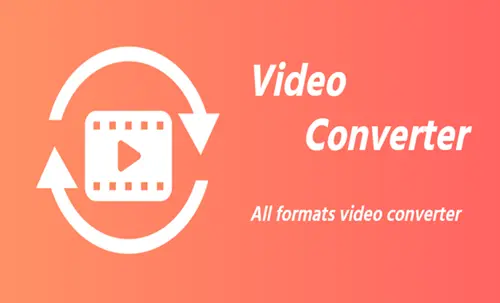In the digital age, where content is king, video has risen to prominence as one of the most engaging and effective forms of media. Websites across all niches leverage video to captivate audiences, convey information quickly, and enhance user engagement. However, integrating video content poses unique challenges, particularly regarding website performance and responsiveness. This is where the utility of online video converters becomes crucial. In this blog, we will explore the significance of responsive design in managing video content and how online converters can aid in maintaining optimal site performance.

Understanding Responsive Web Design
Responsive web design is a method of developing websites that ensure content displays efficiently and effectively across various devices. This approach provides an optimal viewing experience easy reading and navigation with minimal resizing, panning, and scrolling regardless of the device used.
The Need for Responsiveness
With a significant portion of web traffic coming from mobile devices, a responsive design is not just beneficial but essential. The diversity in device screen sizes makes it critical to adapt the layout of content, especially video, to provide a consistent user experience across all platforms.
The Importance of Responsive Design for Video Content Optimization
Responsive design is crucial when featuring video content on websites, ensuring that videos display well across a range of devices with varying screen sizes, from smartphones to large desktop monitors. This adaptability enhances user experience by providing seamless access to video content regardless of the device used. Online video converters play a significant role in maintaining site performance by optimizing videos for quick loading times and reduced bandwidth usage. Use an online video converter tool to change your videos into different formats such as MP4, GIF, MP3, WAV, AVI, and more.
Just upload your file, adjust your settings, and get great results easily. These tools enable website owners to convert videos into formats that are suitable for different devices and connection speeds, which helps in avoiding slow page load times that could deter viewers and negatively affect SEO rankings. Such converters ensure that videos contribute positively to the overall responsiveness of a website.
The Role of Online Video Converters
Online video converters are tools that allow you to change the file format of a video to ensure compatibility and optimize playback across different platforms and devices. These tools are essential for maintaining website performance when featuring video content. Here’s how they contribute:
1. Format Compatibility
Different browsers and devices support different video formats. Online video converters help ensure that your video content is accessible to all users by allowing you to convert videos into multiple formats like MP4, WebM, or OGV. This versatility prevents playback issues and enhances user experience.
2. Compression for Improved Load Times
Video files are typically large, which can significantly slow down page load times. Slow-loading pages frustrate users and increase bounce rates. Online video converters can compress video files to smaller sizes, reducing load times while maintaining quality. This not only enhances user experience but also improves SEO rankings as search engines favor fast-loading websites.
3. Quality Adjustment
Adjusting the quality of video files is crucial for balancing load times and visual quality. Online converters offer options to modify resolution, bitrate, and quality to suit different devices. For example, a lower-quality video might be sufficient for viewing on a small smartphone screen, whereas a higher quality would be preferable on a large desktop monitor.
4. Embedding and Streaming Optimization
For videos to be effectively embedded on websites, they need to be optimized for streaming. Online video converters can prepare videos for streaming by optimizing their format and quality based on the anticipated distribution and traffic. This ensures smoother playback and a better overall user experience.
5. Cost-Effective and Accessible
Using online video converters is a cost-effective solution for businesses and individuals who cannot afford professional video editing software or services. These tools are typically user-friendly, requiring no technical background to operate. They provide a quick and affordable way to make videos compatible and optimized for any website.
Best Practices for Using Online Video Converters
When using online video converters, consider the following best practices to maximize effectiveness:
Understand the target audience: Know the devices and browsers your audience uses and convert videos accordingly.
Maintain a balance between size and quality: Opt for the smallest file size that still delivers acceptable quality to enhance load times without sacrificing viewer satisfaction.
Regularly update videos: As technology and standards evolve, regularly update your video files to ensure they remain compatible with new devices and browsers.
Test thoroughly: Before finalizing video content on your website, test it across different devices and browsers to ensure consistent quality and functionality.
Conclusion
Responsive design is not just about aesthetic appeal; it’s crucial for functionality, especially when integrating media like video. Online video converters play a vital role in this ecosystem. They ensure videos are formatted correctly, optimized for quick loading, and set up for streaming, which are all critical for maintaining site performance. As video continues to dominate the digital landscape, the importance of these tools in building responsive websites cannot be overstated. By using online video converters effectively, web developers and content creators can enhance user engagement and provide a seamless viewing experience across all devices.
Santosh Kumar, the author behind IndiasStuffs.com, is passionate about sharing valuable insights on a variety of topics, including lifestyle, technology, and Indian culture.
Page Contents

